Distorted Images – How To Fix Through the Ribbon
As another option to correcting images that have been stretched and distorted, the Reset Image options are available on the Ribbon. This is usually quicker way to accomplish the same thing detailed in last blog post.
Here is my stretched and distorted sample image.

To reset the image:
1. Select the image.
2. Go to the FORMAT tab, PICTURE STYLES section, and the RESET PICTURE drop down.

3. Click the triangle on the RESET PICTURE option.
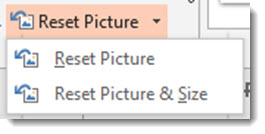
4. RESET PICTURE will remove any styling, such as drop shadow, bevel, border, etc.
5. RESET PICTURE & SIZE removes any styling and reverts the image to the inserted size.
Using RESET PICTURE & SIZE the stretched TLC logo is returned to its correct aspect ratio and is no longer distorted.

– Troy @ TLC
Distorted Images – How to Fix
There has been an increase in requests for help with distorted images. I believe a big reason is the shift from 4×3 to 16×9, and images becoming stretched when the page setup is changed.
Here is the TLC image that has been inserted onto a 4×3 slide.

When I change the page setup from 4×3 to 16×9, images distort and the TLC logo looks like this:

Note: With PowerPoint 2013, there are some really great aspect ratio conversion options built in, and for PPT 2007/2010 users, there are some very helpful 3rd party add-ins that make the aspect ratio conversion much easier. All are created to help you from starting on the left and getting the image on the right:

To restore any inserted image to its original aspect ratio:
1. Right-click the image and select FORMAT PICTURE
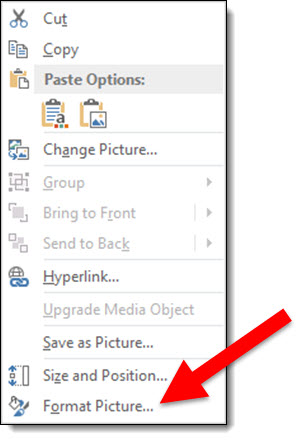
2. From the Format Picture Dialog, go to the SIZE AND PROPERTIES tab
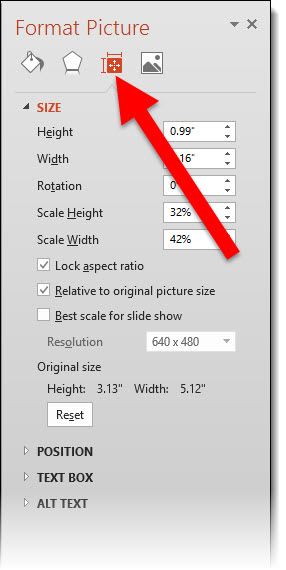
3. Click the RESET button
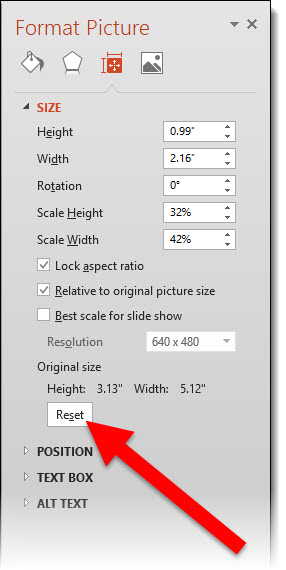
The image will reset to the original inserted size (which also means all effects – shadow, bevel, brightness are removed). Resize the image to fit the slide content area for images that look proportionally correct!
– Troy @ TLC
TLC Creative Services – Designer of the Year!
TLC is located in the wonderful Murrieta/Temecula Valley, just north of San Diego. This week, I received notice that TLC Creative Services, Inc. was selected as the Best of Murrieta “Graphic Designer” for 2014! Murrieta is a great town and we have some very talented designers in the area, at least 9 – the TLC team!

This is the 2nd year in a row TLC has received this award, and we are honored.
– Troy @ TLC
The Problem with PowerPoints Selection Pane
The Selection Pane, introduced in PowerPoint 2007 is a great (and long over due) addition. But I think the dev team was not looking at the feature from a real-world use – and has not been updated yet (sigh…).
Here is my sample slide, that has many items on it. A good example of where the Selection Pane would be used.
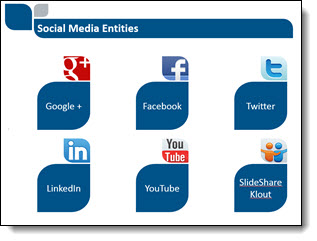
To open the Selection Pane: HOME >> EDITING >> SELECT >> SELECTION PANE

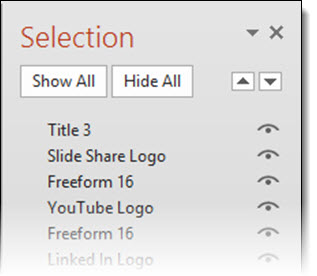
Note the on/off icon is on the right.
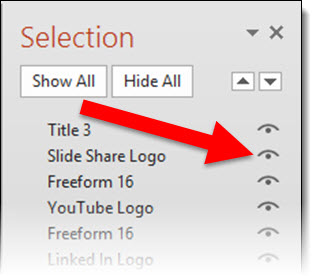
When the Selection Pane is made a smaller width, the tools at the top (Show All, Hide All, Move up/down) wrap nicely to fit the narrower layout.
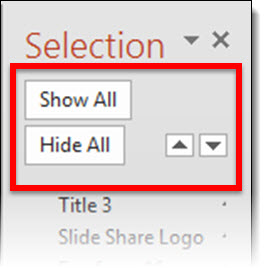
When the Selection Pane is made narrower, the names do not wrap, but the on/off icon is cut off and disappears rendering that feature unusable. At the bottom is a scroller, which does allow access the on/off icon – but it requires so many additional mouse clicks and movements it is not a practical option.
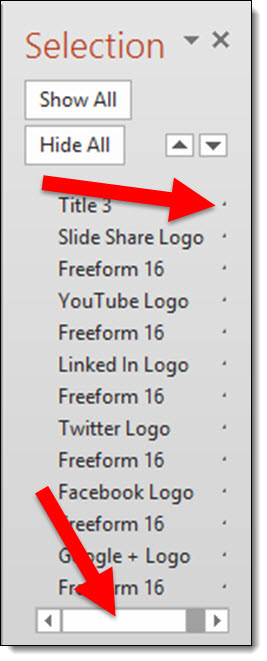
To answer the inevitable question from the MS Dev team – “why would you need to make the Selection Pane so narrow?”. In the real world, we work with different resolutions (please test the Selection Pane at 1024×768 to see how much screen real estate it needs to be functional), have several panes open side-by-side, have dozens of objects on a slide – on and off the slide area – and want to work at the largest viewable size, and many other real situations where the selection pane is in the way when so wide.
So what should the MS Dev team do? Simple: move the on/off icon to the left side and let the names get cut off.
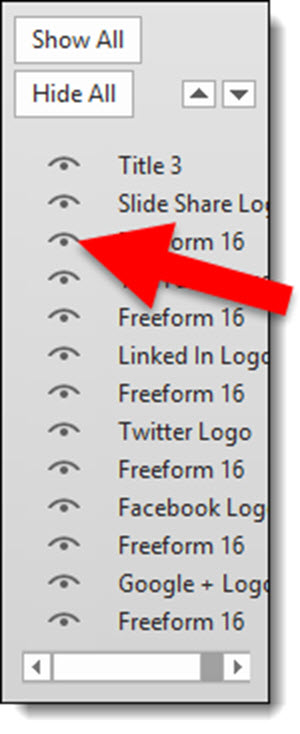
Leave a comment about your experience with the Selection Pane tool (in PPT 2007, 2010, 2013).
– Troy @ TLC
Before & After: Bullet List to Process Diagram
Here is a quick Before-and-After slide. The original slide deck was primarily all bullet list text. TLC reviewed all content and proposed layouts that minimized the bullet list format and provided more visual layouts of the same content. For this slide, in going over the content with the client, we learned the bulleted text was really the talking points for a discovery process, which we happily converted into a process diagram layout. Same message, same content, but visual layout!
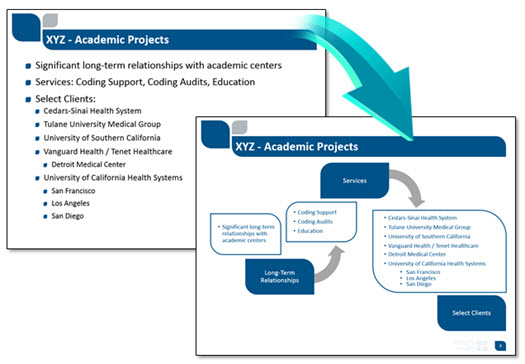
– Troy @ TLC
Sample Slides
Just a few slides from a recent project. Sorry, I cannot show the dynamic animations on each of these or the full presentation. But it is great to showcase slides where we get to really develop everything. On these, TLC dropped out the background on all vehicle images and created layers of content that can be separately animated in for the final slide layouts.

– Troy @ TLC
Is That Straight Line Really Straight…?
The snap-to-grid, Align to anchor point and random placement of PowerPoint lines can, at times, become frustrating. When reviewing a slide layout, I am often looking at lines and trying to determine if they are straight. For example, after looking at this simple layout, I question whether the line connecting the two boxes is straight or just an optical illusion.

When we zoom in and add a guideline to see what is straight – the connecting line is very slightly off. Not a big deal when viewed as a small image here on the blog. But enlarge this diagram to fit a 40′ wide screen and this small inaccuracy is big!
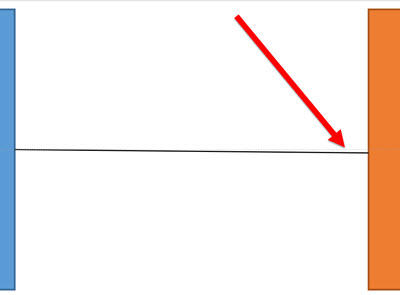
One of my go to PowerPoint add-in sets is from ToolsToo.

These two tools are in the SHAPE TOOLS section: MAKE LINE HORIZONTAL and MAKE LINE VERTICAL.
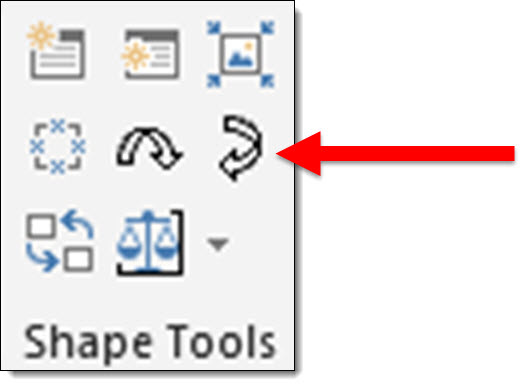
Two clicks and I know a line is straight. Select the line, click the horizontal or vertical button and no matter what the line is snapping to, it is set to a straight line on the 0 or 90 degree axis!
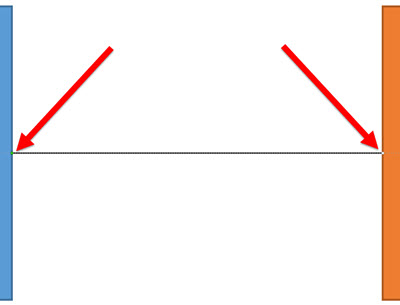
– Troy @ TLC
